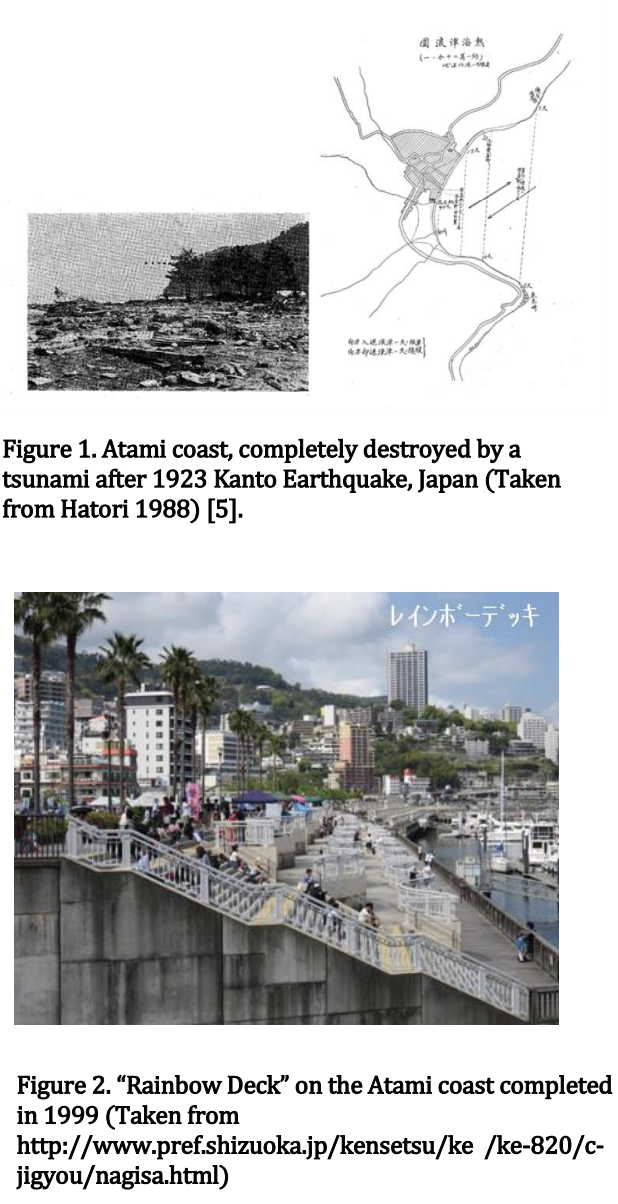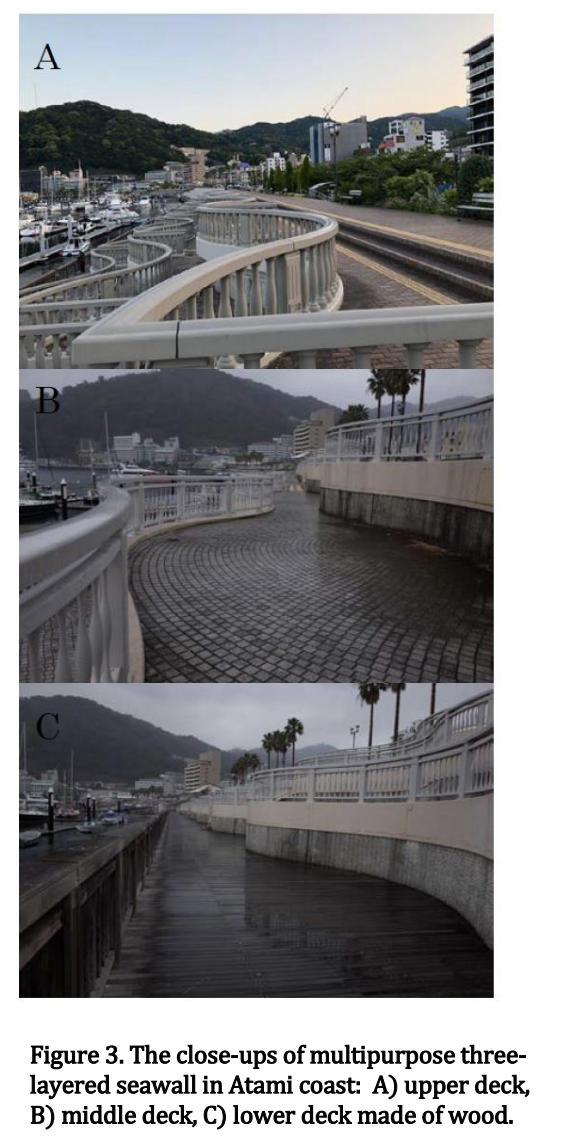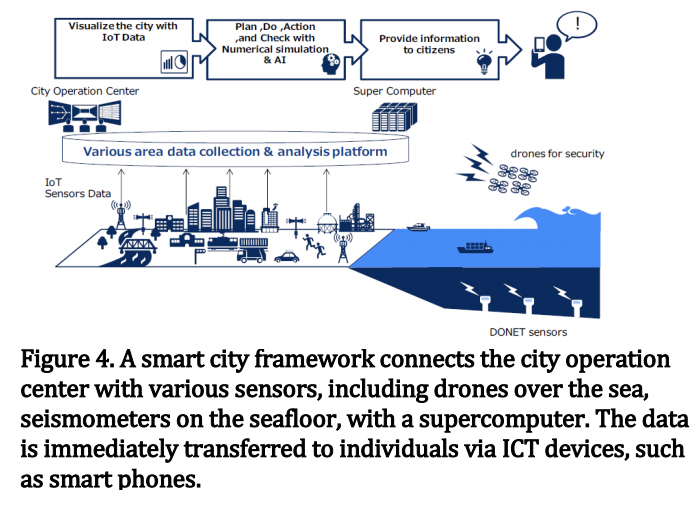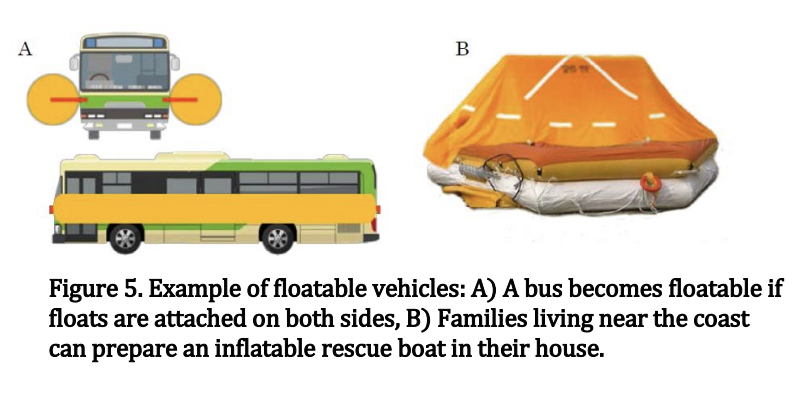Natural disasters are increasing year by year and the loses caused by natural disasters amounted to 306 billion dollars in 2017 alone according to Swiss Re. Therefore, we must consider how to ensure the resiliency of society from humans to infrastructure. The theory of Preventive Diplomacy can be applied to the prevention of natural as well as human induced disasters. I would like to propose three issues regarding the people and infrastructure which can contribute to disaster mitigation such as 1. Enabling laws 2. Awareness raising and infrastructure. By providing education, lifelines and infrastructure support, we can make a difference to human security.
Challenge
INTRODUCTION: ENSURING SOCIAL RESILIENCE
A simple glance at the world map of conflicts leaves most of us simply speechless. At the same time, natural disasters such as earthquakes, droughts, floods, avalanches, volcanic eruptions, landslides, wildfires, hurricanes, tornados, cyclones, typhoons as well as tsunamis are increasing every year.
In 2017 alone, losses caused by natural disasters amounted to 306 billion dollars according to Swiss Re [1]. Therefore, we must consider how to ensure the resiliency of society from humans to infrastructure. The theory of Preventive Diplomacy can be applied to the prevention of natural, as well as human-induced disasters.
PREVENTIVE DIPLOMACY
Given these realities, if we are to have any hope of changing the world’s dependence (historically speaking) on war to resolve disputes, it is very important to revisit the concept and value of “Preventive Diplomacy”. The prevention of both natural and human-induced disasters should be rooted in Preventive Diplomacy and predicated on non-violent means applied to resolving international conflicts, and these methods should be used whenever possible as a first resort.
In the case of natural disasters, the application of such Preventive Diplomacy also provides a platform for nations/states willing to cooperate with the global community – regardless of conflicting politics and ideologies – on behalf of their own people who live in local villages and towns, and suffer from disasters that are beyond their control. Therefore, I believe that natural and human-induced disaster prevention should be based on the same principles as Preventive Diplomacy.
In its simplest form, Preventive Diplomacy can be best explained by breaking it down into four stages:
1. Preventing conflicts from breaking out
2. Preventing conflicts from expanding
3. Promoting ceasefires that stop the conflict to enable recovery
4. Preventing the resumption of hostilities (44% of current conflicts in the world are recurring)
This same concept can be perfectly applied to natural disasters by:
1. Preparing for natural disasters before they happen
2. Rescuing victims quickly
3. Recovering from the disaster
4. Focusing on reconstruction that reduce risk in the event of another disaster I believe in the Japanese saying, “Be prepared and you will have no regrets”.
Proposal
I would like to propose three issues regarding the people and infrastructure which can contribute to disaster mitigation.
1. ENABLING LAWS
We suffered immensely after the Great East Japan Earthquake and Tsunami of 2011. By 10th September 2018, the number of the deaths reached 18,432 and 2,536 more were missing. The cause of death for 90.6% of the people (14,308), was drowning. Furthermore, about 73,000 are still displaced, and 402,704 houses/buildings collapsed.
However, we may have suffered even more after the Great Hanshin Awaji Earthquake in 1995 (6,434 deaths, 76% of them crushed to death) due to legal restrictions. We learned a lot about legal bindings from this natural disaster.
As an elected member of the Japanese Diet, I worked hard to improve various laws and regulations. Here are some of the cases I worked on.
The first one is “Quarantine of Detection Dogs”.
The British Emergency Rescue Team arrived in Kobe with detector dogs 24 hours after the Great Hanshin Awaji Earthquake. However, the team could not use the dogs because the law required for the dogs to be quarantined for six months. After the Great East Japan Earthquake and Tsunami on 11th March in 2011, on the other hand, 46 detection dogs from 9 countries (Korea, Singapore, Germany, Switzerland, Mexico, Australia, USA, UK and Netherlands) were unleashed immediately and returned to their own countries by March 27th 2011 after the mission was completed [2].
The second example is the “Foreign Doctors’ Medical Practitioner’s Law”.
Many medical doctors from overseas came to Japan to help the wounded, but because they did not have Japanese medical licenses, they could only serve as support staffs. At the same time, offers of sending medical teams from the governments of Greece, Slovakia, Bangladesh, Yemen, Cuba, Poland, Yugoslavia, UK, Korea, China and Thailand were rejected because only doctors who possessed the medical doctor’s license of Japan could provide medical treatment. With this, the Ministry of Health, Labour and Welfare immediately announced the acceptance of those nations/states’ offers as “special and exceptional cases” on 23rd January, 5 days after the disaster. Furthermore, at the Great East Japan Earthquake and Tsunami, medical units from Israel, Jordan, Thailand and the Philippines were immediately accepted while 40 nations/states offered to send medical units [3].
The third example is the “Road Traffic Act”.
This is a law to keep private cars off the roads in case of an emergency or disaster. After the Great Hanshin Awaji Earthquake, there were many fires especially in Kobe, because the earthquake happened while people were preparing breakfast. Many fire engines and ambulances from neighboring prefectures tried to reach the disaster area but could not, because the roads were jammed with private cars trying to escape from Kobe. The laws were amended and applied before the Great East Japan Earthquake and Tsunami 16 years later.
In addition to the laws above, the Earthquake-Resistant Building Standards were upgraded to withstand greater earthquake intensity; from intensity 5 to intensity 6. By 2017, 95.6% of elementary and junior high schools in Japan had been upgraded to these standards [4].
Every country must review its disaster-related laws.
2. AWARENESS RAISING
After the Great East Japan Earthquake in 2011, men were much more likely to commit suicide than women. Therefore, we must encourage male friends/colleagues as well as female friends/colleagues to be more resilient at the time of a disaster.
These were the problems pointed out just before the Great East Japan Earthquake. In 2010 I introduced these warnings at the International Disaster Prevention Conference in Berlin as a keynote speaker. And unfortunately these warnings became happened actually in 2011:
1) People forget how devastating tsunamis are as years pass.
2) People get used to warnings and tend to ignore them.
3) Major breakwater seawalls built along the coast make residents feel complacent.
We should keep these issues in mind not only in relation to tsunamis but also for other natural disasters. We must educate the public and take preventive and mitigative measures before it strikes.
In Japan, elementary schools teach children how to protect themselves from disasters, especially earthquakes.
3. INFRASTRUCTURE
*Multipurpose Seawalls
To mitigate disaster, we need infrastructure, but we should revisit its functions and purposes. Seawalls in tsunami areas, for example, are usually high concrete walls that prevent people from enjoying the beautiful scenery. But the multipurpose seawall in Atami attracts tourists and is a successful example. Atami suffered from a tsunami in 1923, the Kanto Earthquake Tsunami, which was estimated to be 12 meters high (Fig. 1) [5].

Since the booming growth period from 1955 to 1973 when Atami was well known for its onsen (hot springs), the economy of Atami has worsened drastically and it has been referred to as the “forgotten onsen area”. However, the economy has recovered somewhat today thanks to the new multipurpose seawalls that stretches along the seacoast which Shizuoka Prefecture planned the build in cooperation with Atami City and related ministries of Japan (from 1989 to the present (Fig.2). And in 2017, the third engineering district was completed. Each district has a specific theme. The theme of the third district is San Remo, Italy, a sister city of Atami, and the fourth and last district will be of the Aegean, of Greece [6].
The multipurpose seawall in Atami contributes to the citizen’s multilateral activities (Fig. 3). This wall attracts tourists as well as citizens during the fireworks festival. Everyone can take a walk on the wide wooden deck attached to the seawall (Fig. 3C) on the seaside. There is also an event space with an outdoor stage on the backside of the seawall on the town side (Fig. 3A), and many types of performances are carried out attracting many people. It also provides a footpath in braille, wheel chair slope, and even public car parking under the threelayered seawall.

The cost of construction had to be much higher than the ordinal seawall. However, the cost performance is so good and the ripple effect of being able to take walks, having an ocean view, parking, and attracting tourists not just from neighboring areas but also from overseas altogether is great for the citizens. A beach and yacht harbor are also a part of the long-term plan.
The most important element of the success of this Long-range Overall Seacoast Building Plan can be explained with the following three points. First, Shizuoka Prefecture provides questionnaire surveys periodically for citizens and policy evaluation from related ministries. Second, transparency of information and data. And third, analysis of cost-effectiveness. For example, the coast use benefits of the Nagisa Area is 65.1 billion yen and Taga Area is 7.6 billion yen, which comes out to a total of 72.7 billion yen. The traffic congestion benefits in Taga Area is 1.8 billion yen. Therefore, the cost benefits of the Overall Seacoast Building Plan come out to 8.31 billion yen according to the Ministry of Land, Infrastructure and Transport, announced in May 2009 [7].
The infrastructure should be designed and established based on a long–term multipurpose development plan considering the future for its communities, villages, towns, and cities overall. To achieve this, municipal budgets should be combined with the financial support of the ministry’s silos.
*Smart City
A Smart City is an urban area that efficiently manages the use of various data collected by IoT technologies. The concept of Smart City started from the effective use of power grids for renewable energy sources through smart meters and an online control system. Now, it includes not only the electric consumption by power meters, but also traffic flow rate by velocity sensors, amount of garbage in the container, as well as weather and water levels. The data collected from the various sensors can be used for prevention and mitigation during a disaster as well (Figure 4). For example, it can make evacuation recommendations for people based on real time data of the water levels. When a disaster strikes, drones used for maintenance of infrastructures may be launched to take pictures of the various areas of a city to get a clear look at the situation. A Smart City is also capable of the efficient use of limited resources in the recovery phase, along with providing information of shelters and transportation teams.

The rapid growth of computational power and development of the numerical code of the tsunami-wave propagation are almost achieving the (super) real-time tsunami simulations. Based on simulations of such high-level technology, we can predict the tsunami heights and the arrival times in various places with high accuracy well before the real waves arrive after an earthquake. It will help with evacuation and prioritization of countermeasures for infrastructures. Such numerical simulations are also effective to sound the tsunami alarm earlier to trigger rescue activities. Citizens will be able to get a safer and more comfortable life if we can combine numerical simulation and Smart City solutions.
*Floatable Vehicles
Most (93%, 14,680) of the deaths (15,786) caused by the tsunami disaster in the 2011 earthquake off the Pacific coast of Tohoku was drowning [8]. The ARCA (Ark) project has started to develop ARCAs to reduce the number of deaths caused by drowning during a tsunami.

ARCA will have the capacity to protect people from being crushed by debris, low temperatures, and surviving up to 72 hours before rescue arrives (Figure 5.). One good candidate is a bus (Figure 5A.). If a bus can stay afloat for several days, handicapped people (infants, sick, old, and pregnant people) and the people left behind can get on the bus and try their fortunes to survive in the most severe conditions of a tsunami disaster. The additional cost of the remodeling for a floatable vehicle can be as low as 10% of the original cost of the bus. On the other hand, families who are living near the coast can have inflatable rescue boats prepared (compact and in storing form) in their houses. It can be inflated within 30 seconds, which will serve as ARCAs for families when the tsunami arrives. A rescue boat for five people in which minor changes are made from those used on ships, can be supplied at a price less than 450 thousand Japanese yen (equivalent to about 4,000 US dollars).
CONCLUSION: ADDRESSING COMMON INTERESTS
When we look at trade problems plaguing the world at this moment, we must keep in mind that all human beings have wisdom, feelings, culture and education. Based on this understanding, most developed nations/states have tried to establish multilateral rules that align with common interests. In order to mitigate disasters, we must all be prepared with enabling laws, raised awareness, and stout infrastructure before the disaster happens to make social resilience stronger, meeting the needs of the people according to geography, climate, history, and scientific prediction of various natural disasters in each community and nation/state. Regarding construction funds, everybody claims the shortage of funds, but we must use our own wisdom to find various ways to fulfill the purpose. Atami’s case is a good example of why there should be a long-term plan and the result of the collaboration of various ministries through projects as well as prefectures and cities to meet the goals of multipurpose plans of city and/or coast building is a positive one. Another way is to set a special tax for the purpose of disaster mitigation. Or if your city or town would like to invite some large-scale enterprises, these private sectors can invest in the area and operate as part of the CSR. Crowd funding is another possibility if the scale of infrastructure is not too big.
We must actively seek out common interests in order to avoid conflicts and/or wars especially in the context of cyber and space domains, but especially through our shared interest in the world’s fragile natural resources including the Arctic and Antarctic regions. The Arctic is melting at an alarming rate in front of our collective eyes as a result of climate change, and the Antarctic Ocean is a focus of fierce competition against the backdrop of a 99-year moratorium on commercial development protecting seabed resources that will run out soon. These examples underline the urgent need to spread the concept of protecting “common interests” to everyone who does not yet realize its importance.
We must choose our own way and establish networks to walk together wherever we find ourselves, and we must cooperate and work together to build a much safer world community. By providing education, lifelines, and even infrastructure support, we can make a difference to human security, regardless of differences in race, religion, skin color, or nationality.
References
[1]Global disasters in 2017 caused an estimated $306 billion in economic losses, says Swiss Re. https://www.cnbc.com/2017/12/20/swiss-re-global-disasterspush-2017-economic-losses-to-306-billion.html
[2] Swift custom clearance of rescue dogs, Ministry of Agriculture, Forestry and Fisheries, Japan, April 11, 2011 (in Japanese). https://www.maff.go.jp/j/syouan/soumu/saigai/kyuujyo_ken.html
[3]Tazunoki, S., Foreigners, provide and receive the supports at East Japan Great Earthquake disaster, Bulletin of Waseda Institute of the Policy of Social Safety, 4, 87-112 (in Japanese).
[4]Results of the research on the improvement of the buildings for earthquake proof in public schools, Ministry of Education, Culture, Sports, Science, and Technology, Japan, 2015 (in Japanese). https://www.mext.go.jp/b_menu/houdou/27/06/attach/1358429.ht m
[5]Hatori, T., 1983, Behaviors of the tsunami of 1923 Kanto Earthquake in Atami and Hatsushima, Bulletin of Earthquake research Institute, 58, 683-689 (in Japanese).
[6]Ministry of Land Infrastructure and Transportation, Examples of Tourism social capitals (in Japanese). https://www.mlit.go.jp/sogoseisaku/region/kankosyakaisihon/85/2 207.pdf
[7]Evaluation of Atami Port Coast Development Project, May 2009, Ministry of Land Infrastructure and Transportation (in Japanese). https://www.soumu.go.jp/main_content/000023566.pdf
[8]White Paper of Police, Japan, 2012 (in Japanese). https://www.npa.go.jp/hakusyo/h24/data.html








